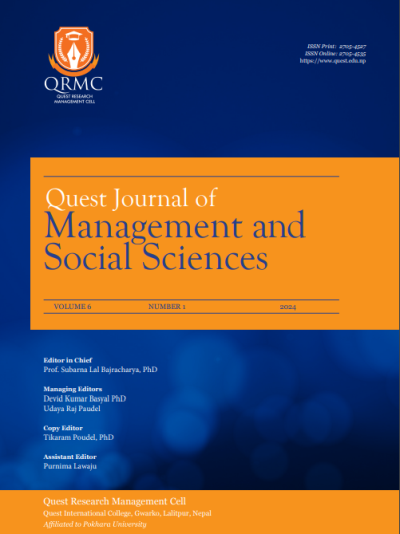The Nexus between Remittance and Economic Growth in Nepal
DOI:
https://doi.org/10.3126/qjmss.v6i1.67237Keywords:
Remittance, Capital Expenditure, Consumption, Economic Growth, CointegrationAbstract
Background: Remittance has been a pivotal source of financing economic activities in lower-income nations, including Nepal and could significantly boost the economy.The key objective of the study is to inspect the link between remittance inflow and economic growth in Nepal.
Methodology: This study uses the Auto-Regressive Distributive Lag (ARDL) approach to cointegration. The Bounds test has been carried out to explore the existence of a long-run association between variables.
Results: The empirical outcomes indicated a positive and significant long-run relationship between remittance inflow and economic growth in Nepal. Similarly, capital spending and consumption expenditure have also positively and significantly contributed to the economy.
Conclusion: The study concludes that remittance inflow has been supporting economic growth episodes in Nepal, and an increased flow of remittance can boost the economy permanently if it is utilized in productive and capital formation channels.
Implications: The study implies that real economic growth in Nepal can be enlarged if the policymakers focus on the productive linkage of remittance income in the country.
Originality: This paper is original and has not been published in other publications. Similarly, no financial support has been received while working on this paper.
Paper Type: Research paper
Downloads
Downloads
Published
How to Cite
Issue
Section
License
Copyright (c) 2024 Quest Journal of Management and Social Sciences

This work is licensed under a Creative Commons Attribution-NonCommercial-NoDerivatives 4.0 International License.
This license enables reusers to copy and distribute the material in any medium or format in unadapted form only, for noncommercial purposes only, and only so long as attribution is given to the creator.




